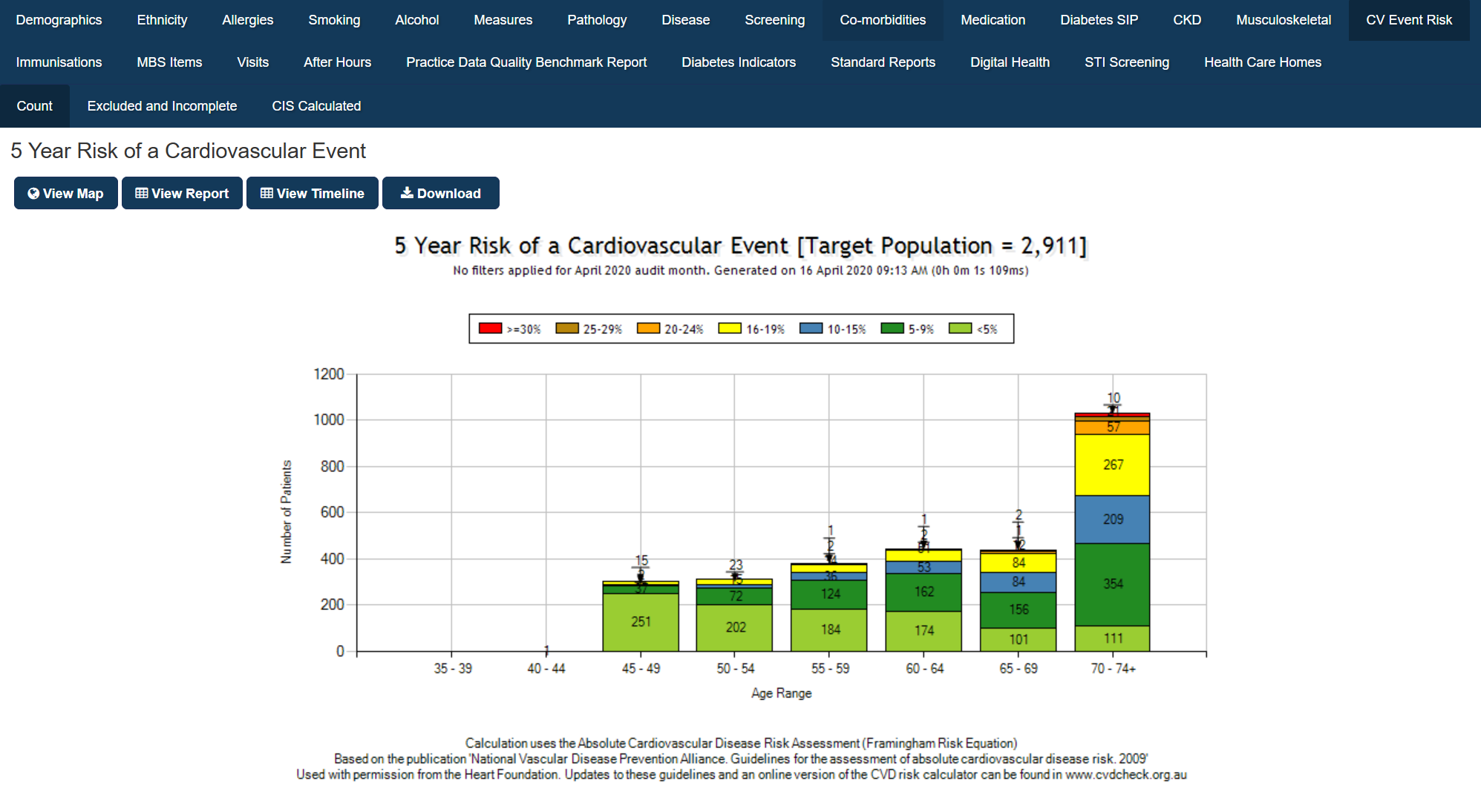The CV Event Risk graph displays your data as the % risk of a Cardiovascular Event in 5 years time. It is a guide only based on population health statistics and is useful for clinicians to gain a high level view of patients who are at risk for surveillance.
It is derived from the publication "National Vascular Disease Prevention Alliance. Guidelines for the management of absolute cardiovascular disease risk. 2012" which is available from the websites of the members of the National Vascular Disease Prevention Alliance (Heart Foundation, National Stroke Foundation, Diabetes Australia and Kidney Health Australia).
New Guidelines The Australian CVD Risk Calculator has been updated in 2023 based on NZ PREDICT-1° equation (refer to cvdcheck.org.au for more information). Pen CS is currently waiting for technical specifications from The Heart Foundation and the Department of Health to update the report algorithm based from The Framingham Risk Equation (FRE) to NZ PREDICT-1° equation. Please contact support team if have further questions.
The Framingham Risk Equation (FRE)
The FRE predicts the risk of a cardiovascular event over the next 5 years. The calculation can be found in the Absolute CVD Risk Resources provided at the www.cvdcheck.org.au website.
The calculation excludes patients who have:
- Age: Non ATSI <45 or >74*, ATSI <30 or >74*
- Condition: CVD
* Risk for patients who have age>74 is calculated using age=74.
The data items used in the calculation are:
- Age
- Gender
- Systolic BP (mm Hg)
- Total Cholesterol (Mg/dL)
- HDL (Mg/dL)
- Smoking Status (Smoker/Non-smoker)
- Diabetes
- ECG-LVH (always set to 0) ECG-LVH: ECG (Electrocardiogram) is a test and LVH (Left Ventricular Hypertrophy) is a condition that is detected by this test. If LVH is detected as definite this value in the FRE is set to 1, otherwise it is set to 0. Currently the outcome of this test is not recorded as a coded value in the clinical software packages and therefore cannot be extracted. Hence, this value is always set to 0.
CV Event Risk displays your data as a breakdown of the % 5 Year Risk of a Cardiovascular Event: >=30%, 25-29%, 20-24%, 16-19%, 10-15%, 5-9% and <5%.
The data is displayed as count per age range in a bar chart. Chart functions available are as described for Demographics (Bar Chart).
The graph provides a total population number (the filtered population) and an eligible population number. The eligible population is the number of patients in your filtered dataset that can be assessed for risk ie. patients that do not fall into one of the excluded groups.
The 'Count' on the Count graph will show you the total of the patients graphed – this is the total number of patients where CV Event Risk has been able to be calculated. The eligible population – graph count = patients with incomplete data where no risk can be calculated. These patients are displayed on the second tab.

